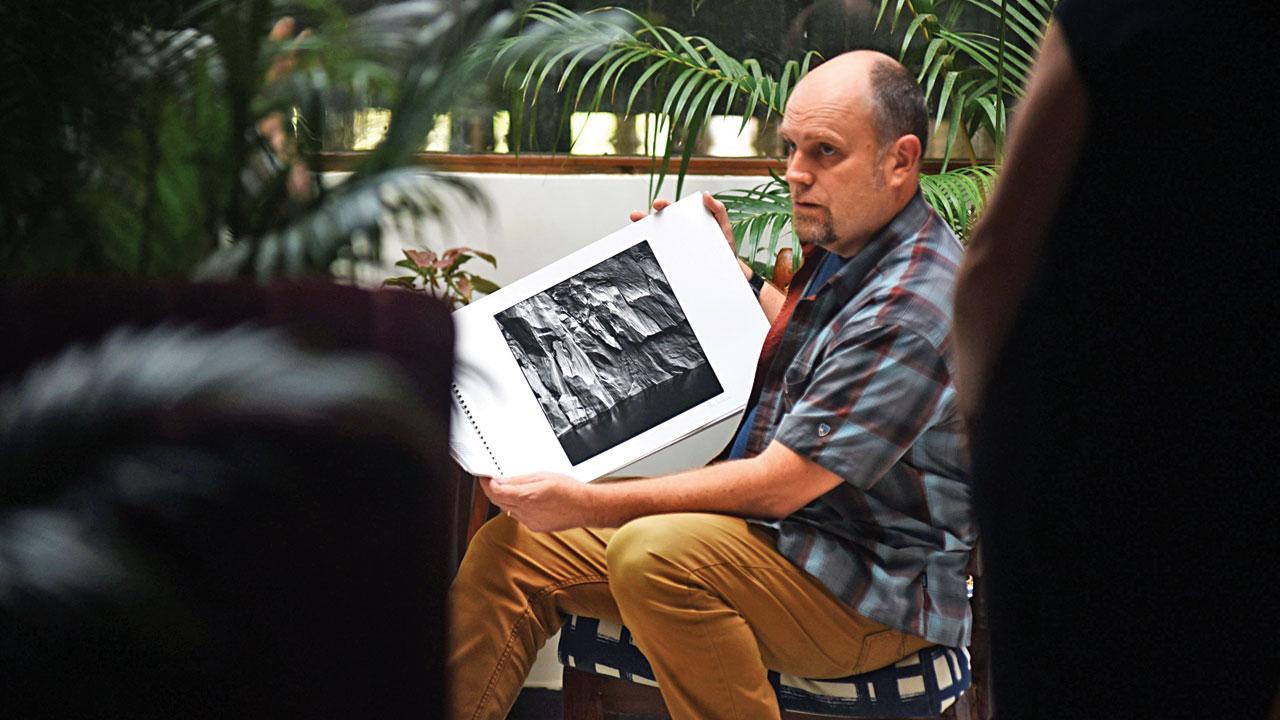Environment photographer Ian Lockwood’s Sky Islands exhibition portrays the beauty of the Western Ghats in monochromatic splendour

Environmental photographer Ian Lockwood, who lives in Colombo, Sri Lanka, says that his black-and-white photos capture the minute elements of a landscape in a way colour photography cannot. Pic/Sameer Markande
Say Western Ghats and one can hardly picture it without a riot of orange, purple and yellow of flowers in bloom, amidst all conceivable shades of green. Under an overstretched sky of blue. Which is why when we flip through the breath-taking series of photos clicked by environmental photographer Ian Lockwood, we are surprised to note how the ecologically-rich region comes alive even in his black-and-white photographs.
ADVERTISEMENT
“Although we have such a variety of options for colour photography in today’s day and age, the black-and-white medium, which I primarily work with, has an aesthetic value,” Lockwood says. “It simplifies otherwise complex objects and surroundings, and at the same time, brings out the unique characteristics of a composition.” Lockwood, who has been living in Sri Lanka for 18 years, is a teacher of geography and environmental systems at Overseas School of Colombo, and is coming back to India with a collection of his works to exhibit.
Lockwood, who originally hails from New England in the United States, grew up in Kodaikanal in Tamil Nadu, and is a second-generation student of the Kodaikanal International School (KIS) which was founded in 1901. His interest in photography was a by-product of his love for documenting the ecosystems of the Western Ghats. “I’m interested in photography both as an art form and a tool for documentation,” he explains. “When you take a picture for documentation purposes, it can be used as a tool for mapping and recording how the environment has changed from, say, 50 years ago. It gives you evidence of a certain point in time and space.”
It’s not just a camera that he works with, but also satellite imagery and geo-spatial equipment that helps trace the history of these ecosystems. Though his upcoming exhibition, titled Sky Islands, he endeavours to capture exactly this journey through time. The Western Ghats are dear to his heart thanks to the multiple treks, trips, and exhibitions he went on in the unexplored depths of the mountainous regions. Lockwood recalls his father’s stories of the region, and his own forays into the Palani Hills. The Sky Islands exhibition features detailed snapshots of the mountainous region: gushing waterfalls, panoramic views of mountaintops, and lush palm trees, stretching towards the heavens. Although the photographs are monochromatic, the beauty of the region is highlighted in even stronger contrast.
The exhibition aims to foster a renewed sense of appreciation for the region, a hill range that is older than the Himalayas and marked by UNESCO as a heritage site, and the value it holds in terms of water sources, flora and fauna. It is also a fund-raiser for the Center for Environment and Humanity (CEH), the research wing of the Kodaikanal International School, set up a couple of years ago with the specific aim of researching the ecosystems of the Western Ghats. “I’ve been interested in exploring the Western Ghats since I was in school,” he recalls. “The goal is for visitors to experience an old landscape in a fresh way, to create a a new appreciation for the reality of these fragile landscapes and ecosystems.”
Lockwood, who also conducts academic research involving the region, recalls how the landscape has changed over his lifetime, with the planting of non-native species such as timber and urban developments. “When I was in school, my family and I were able to trek into the Palani hills. Now, many of the areas are restricted because they are protected. The exhibition brings together and highlights of all the experiences of my childhood, as well as the stories behind them.”
WHAT: Sky Islands: An Endangered Indian Landscape
WHEN: November 23 to December 3, 12 PM to 8 PM
WHERE: Dilip Piramal Art Gallery, NCPA
 Subscribe today by clicking the link and stay updated with the latest news!" Click here!
Subscribe today by clicking the link and stay updated with the latest news!" Click here!







